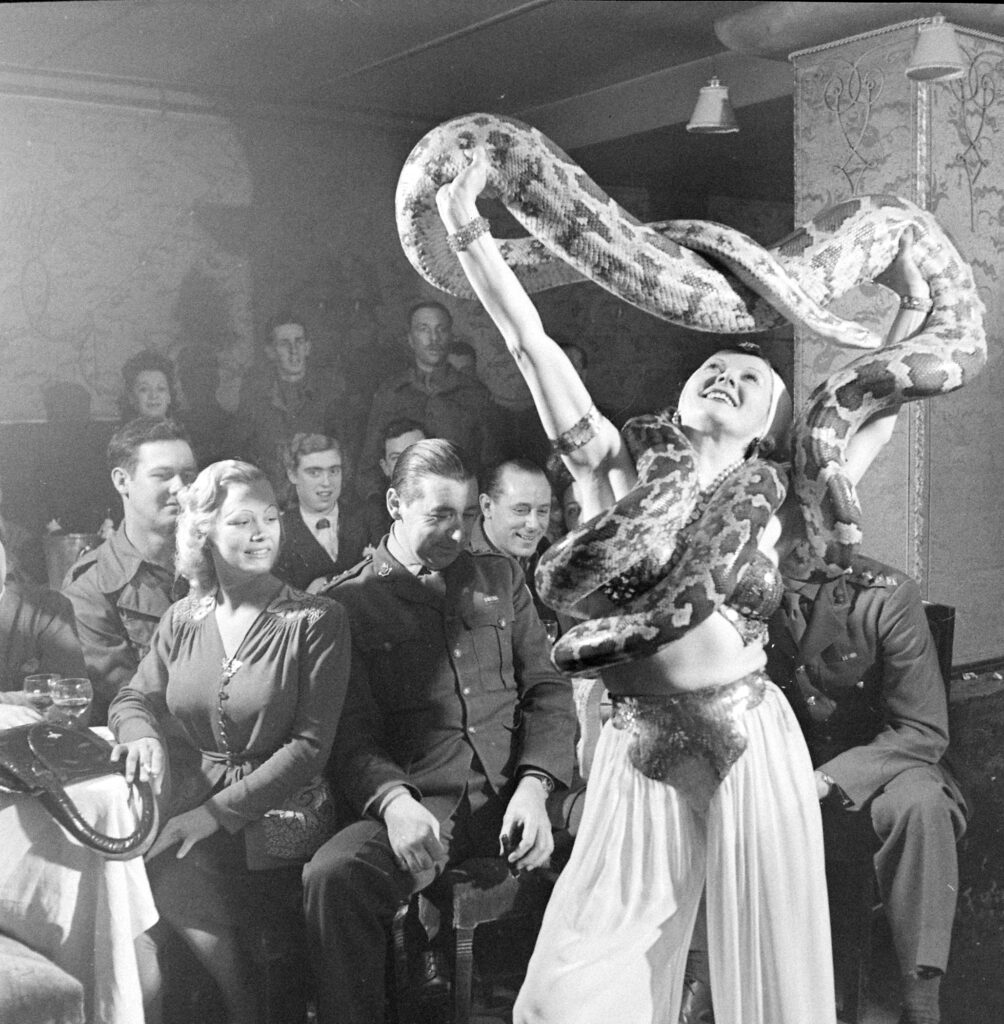Written By: Ben Cosgrove
Americans are on a never-ending quest for the best way to educate their children, trying different approaches to teaching, and sometimes different kinds of schools. Seven decades ago, LIFE visited what might be called a genius school at Hunter College—a school filled 450 apparently well-adjusted, engaged kids from ages three to 11, who just happened to enjoy IQs averaging around 150. (Post-graduate students, by comparison, generally fall in the 120-130 range.)
As LIFE noted in a March 1948 feature on the school:
The school they go to is P.S. 600, part of New York’s public-school system and the only institution in the U.S. devoted entirely to the teaching and study of gifted children. It is held in a wing of the college’s main building, in whose long corridors the bright little kids from 3 to 11 years old like to stop off for between-class chats.
Offhand, young geniuses would seem to present no immediate problems because they are usually bigger, healthier and even happier than average children. However, an educational problem exists simply because they are too bright for their age. If they are promoted rapidly through school on the basis of their studies they will end up as social misfits, unable to enjoy the society of children their own age. On the other hand, if they are held back with their own age group, their quick minds are apt to stagnate.
Hunter children know they are smart, but they are more humble than cocky about their intelligence. . . . Although their interest are advanced, their plans for the future have a refreshing normality. There is a 9-year-old who wants to be a fur trapper, an 8-year-old who wants to be a babysitter and a 7-year-old who wants to be president of the Coca-Cola Company.
Here, LIFE.com presents photos from the feature in the magazine, as well as pictures that never ran in LIFE.
Liz Ronk edited this gallery for LIFE.com. Follow her on Twitter at @LizabethRonk.

Sandy, 7, lectured the science club on the behavior of neutrons in uranium. The diagram was left by the previous lecturer, a chemist.
Nina Leen The LIFE Picture Collection/Shutterstock

A public “genius school” for 3-to-11-year-olds at New York’s Hunter College, 1948.
Nina Leen The LIFE Picture Collection/Shutterstock

Genius school, 1948.
Nina Leen The LIFE Picture Collection/Shutterstock

Genius school, 1948.
Nina Leen The LIFE Picture Collection/Shutterstock

Genius school, 1948.
Nina Leen The LIFE Picture Collection/Shutterstock

A study of time was made by 6-year-olds. Addressing the class, Lucy (standing, left) told what she found out in the library about old-fashioned candle clocks, and her remarks were copied on the blackboard with other students’ observations. The students were critical of each other’s work.
Nina Leen The LIFE Picture Collection/Shutterstock

Building with blocks, instead of aimlessly stacking them, four-year-olds worked together to construct an apartment building with doormen, tenants and a garage.
Nina Leen The LIFE Picture Collection/Shutterstock

Genius school, 1948.
Nina Leen The LIFE Picture Collection/Shutterstock

Genius school, 1948.
Nina Leen The LIFE Picture Collection/Shutterstock

Roy spun a yarn for his friends.
Nina Leen The LIFE Picture Collection/Shutterstock

Roy spun a yarn for friends.
Nina Leen The LIFE Picture Collection/Shutterstock

Roy spun a yarn for friends.
Nina Leen The LIFE Picture Collection/Shutterstock

Roy spun a yarn for friends.
Nina Leen The LIFE Picture Collection/Shutterstock

Playing chess, David (wearing glasses) moved a piece for Lennie. Both are seven and a half. David learned the game from his father, then he taught Lennie how to play.
Nina Leen The LIFE Picture Collection/Shutterstock

Directing the orchestra, a 10-year-old girl received a lesson in conducting from the teacher. Students also had a choral society. Three-year-olds had rhythm bands.
Nina Leen The LIFE Picture Collection/Shutterstock

Genius school, 1948.
Nina Leen The LIFE Picture Collection/Shutterstock

Genius school, 1948.
Nina Leen The LIFE Picture Collection/Shutterstock

Genius school, 1948.
Nina Leen The LIFE Picture Collection/Shutterstock

Genius school, 1948.
Nina Leen The LIFE Picture Collection/Shutterstock

Genius school, 1948.
Nina Leen The LIFE Picture Collection/Shutterstock

Genius school, 1948.
Nina Leen The LIFE Picture Collection/Shutterstock

Ralph, 11, planned to become a doctor.
Nina Leen The LIFE Picture Collection/Shutterstock

In a class in practical conversation in French for nine-year-olds, a waiter asked gentleman to approve the wine, as the lady consulted the French menu.
Nina Leen The LIFE Picture Collection/Shutterstock

This hairdo was designed by two five-year-olds, Joan (left) and Florence. They also liked to make candy and cookies in the school’s miniature kitchen.
Nina Leen The LIFE Picture Collection/Shutterstock

Genius school, 1948.
Nina Leen The LIFE Picture Collection/Shutterstock

Five-year-old Johnny, who taught himself to read, took from the library The Ring of the Nibelung. The library also included simpler books like the Bobbsey Twins.
Nina Leen The LIFE Picture Collection/Shutterstock

In a hallway of New York’s Hunter College, two three-year-olds stopped to talk. The little girl carried a poster inviting students to see the latest block exhibit.
Nina Leen The LIFE Picture Collection/Shutterstock



































